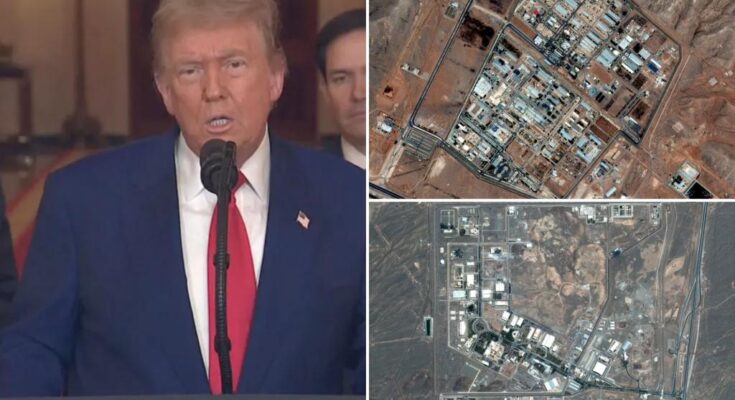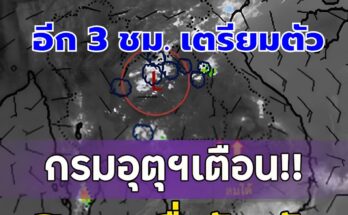The US launched devastating strikes that “obliterated” Iranian nuclear facilities Saturday night — but don’t expect another Chernobyl, experts said.
President Trump ordered strikes on three nuclear sites inside Iran, where International Atomic Energy Agency inspectors have found uranium purified to near weapons grade.
Bunker-buster bombs are believed to have wiped out the Fordow facility, while 30 Tomahawk missiles fired from submarines 400 miles away struck Natanz and Isfahan.
 8
8
President Trump addressed the nation Saturday after unleashing airstrikes on three of Iran’s nuclear facilities.
 8
8
President Donald Trump and Vice President JD Vance watch the strike from the White House Situation Room on June 21, 2025. The White House/ X
But the hits on Natanz, Isfahan and Fordow — Iran’s most secure nuclear enrichment facility, which was buried 300 feet inside a mountain — shouldn’t spark panic over possible nuclear fallout.
Experts in radiation hazards say there is little risk of widespread contamination such as what took place on April 26, 1986, when an infamous power surge and subsequent fire at Russia’s Chernobyl Nuclear Power Plant released massive amounts of deadly radiation into the air, killing 31 and causing widespread contamination and long-term health impacts.
Chernobyl is widely considered the worst nuclear disaster in world history.
Explore More  Rubio warns Iran if it strikes back, it will be ‘worst mistake they ever made’
Rubio warns Iran if it strikes back, it will be ‘worst mistake they ever made’  Trump and Netanyahu defied the diplomats — and saved the free world
Trump and Netanyahu defied the diplomats — and saved the free world  Iran injures 86 Israeli citizens in furious barrage of missiles after US strikes Iranian nuclear sites
Iran injures 86 Israeli citizens in furious barrage of missiles after US strikes Iranian nuclear sites
“This isn’t a Chernobyl scenario,” author Aimen Dean posted to X.
“So, in layman’s terms: this isn’t ‘hot’ nuclear fuel undergoing fission,” he wrote. “It’s uranium in various stages of enrichment, and even a military strike that destroys centrifuges or disperses material is unlikely to produce a large-scale, long-lasting fallout event.
Read the latest on the US bombing of Iran’s nuclear facilities: US strikes Iran live updates: Trump to address the nation on ‘very successful attack’ on three nuclear sites US has bombed three nuclear sites in Iran, Trump announces: ‘Now is the time for peace’ GOP leaders, Sen. John Fetterman commend Trump’s strikes on Iran: ‘The correct move’ Trump’s Iran attack catches world off-guard after fakeouts with B-2 flights and ‘two weeks’ timeframe
The US targeted enrichment facilities — not nuclear reactors — deep within Iran, buffered by mountains in the north and the Caspian Sea in the Northeast, so “there may be localized contamination, but not a region-wide radiological disaster.”
“There’s no fallout threat from this because it’s all underneath,” according to Atlantic Council’s Alex Plitsas.
“The president just prevented World War III with this decisive action. This is the ‘strength’ in ‘peace through strength’ boldly shown to the world at last.”
 8
8
Merrill Sherman / NY Post Design
 8
8
Iran’s Ishafan facility was one of three hit by American airstrikes. Satellite image ©2025 Maxar Technologies/AFP via Getty Images
The nature of the material in Iran is a key reason a nuclear fallout-type event is unlikely.
“With uranium … the radiation doesn’t really travel very far,” Prof Claire Corkhill, chair in Mineralogy and Radioactive Waste Management at the University of Bristol, told the BBC.
Uranium’s toxicity would wreak havoc on the human body if it were ingested, or if the particles from the dangerous substances were inhaled — meaning those close to the site of the bombings could face some health risks, she noted.
 8
8
A satellite image of Iran’s Fordow Fuel Enrichment Plant on June 14, 2025. Merrill Sherman / NY Post Design
 8
8
The New York Post’s front page for Sunday, June 22, 2025.
But another expert insisted that while there might be impacts in a “very local area,” the bombing shouldn’t create “a massive environmental fallout.”
“If there was an incident and the centrifuges were to release the uranium hexafluoride, the gas contained within the centrifuges, then it would be a really severe chemical incident,” Prof Simon Middleburgh, a nuclear materials scientist from Bangor University, told the outlet.
Iran’s uranium was well on its way to being concentrated enough for a nuclear weapon, according to the IAEA.
But blasting a rocket into stockpiles of enriched uranium would not pose risk of a “nuclear incident.”
 8
8
Natanz was another facility struck Saturday night. Satellite image ©2025 Maxar Technologies/AFP via Getty Images
 8
8
Map depicts nuclear facilities in Iran and the ones struck by the US. Rob Jejenich / NY Post Design
“Highly enriched uranium is about three times more radioactive than non-enriched uranium,” said Prof. Jim Smith, from the University of Portsmouth, who has studied the aftermath of the Chernobyl disaster. “But … neither of them are particularly densely radioactive.
“It wouldn’t cause a major environmental contamination problem.”



